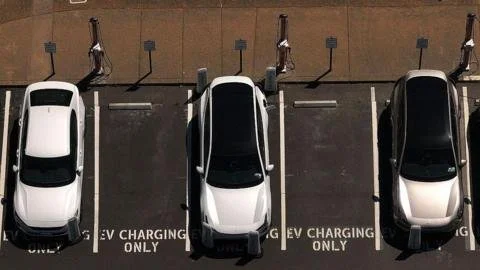Why the US is Stalling in the Global EV Race: Insights into the Electric Car Market Dynamics
In recent years, it might seem like electric vehicles (EVs) are finally gaining traction in the United States, with sales reaching 1.2 million last year—an increase of over 500% from just four years prior. Notably, battery-powered cars made up 10% of overall sales in August, marking a significant milestone. Leading automotive companies like General Motors, Ford, and Tesla reported record electric sales despite economic challenges such as high interest rates and inflation. However, a crucial government subsidy has recently expired, leading experts to predict a potential decline in demand.
The surge in sales is largely attributed to buyers rushing to purchase vehicles before the expiration of a $7,500 tax credit, prompting analysts like Ford’s CEO Jim Farley to anticipate a ‘vibrant yet smaller’ EV market in the coming months. While the US represents the world’s second-largest car market, it lags behind global leaders in EV adoption, such as China, where electric vehicles accounted for almost 50% of all car sales last year, and the UK, where it stood at 30%. In contrast, adoption rates in the US have been hindered by inadequate government support, limiting subsidies and initiatives that have bolstered the EV markets in other regions.
Under the Biden administration, efforts were made to promote electric vehicle production and sales, including tightening emission rules and increasing government fleet purchases. However, political opposition from figures like former President Donald Trump threatens to undo these measures and diminish the attractiveness of EVs as the market’s overall landscape shifts. Currently, the average transaction price for electric cars in the US remains high, at over $57,000, which is significantly above petrol-powered vehicles.
Moving forward, analysts predict that pricing strategies will play a pivotal role in consumer behavior amidst the end of the tax credit and the continuation of tariffs on foreign vehicles. Manufacturers like Hyundai are attempting to mitigate the loss of the tax credit by adjusting their prices downwards, while others like Tesla anticipate price increases on some models. The loss of financial incentives on top of the tariffs could make the upcoming year challenging for EV sales, with expectations of an overall 2% decline in car sales by 2026.
Experts suggest that the recent changes in policy and subsidies represent a significant setback for the US EV industry, highlighting the need for strategic investments to catch up with more rapidly growing markets globally. However, some analysts caution against prematurely declaring the US market as ‘behind’, suggesting that the broader narrative around electric mobility may still be evolving.

